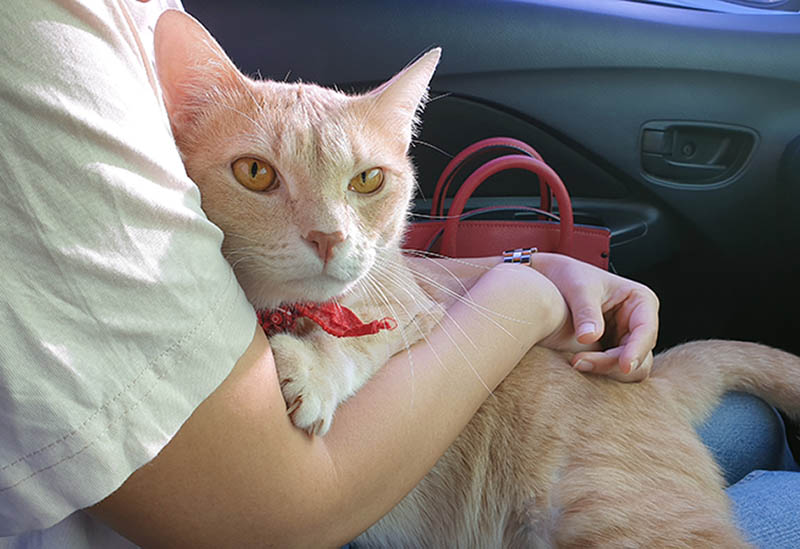
Surrendering a cat can be a hard decision. However, it is sometimes one that we are forced to make. No matter your situation, surrendering your cat may have more options than you realize, but a lot depends on what organizations are nearby.
In most areas, there are several organizations that you could potentially surrender your cat to. Each of these organizations likely has its own requirements and procedures which you can usually find more about on their website. Many do charge a small fee.
However, there are some common steps that you have to take no matter where you live. Here are some things you may want to consider when surrendering your cat. Finally, know that in certain situations, such as those seeking refuge from domestic violence, shelters are increasingly allowing people to bring pets, or have temporary alternative accommodation options for pets. Call and speak to the organization directly if this situation may apply.
Also note that if your cat was previously adopted from a shelter, rescue organization, or even some breeders, that your original adoption agreement may require you to return the cat to them. This can be beneficial for you and your cat, so check their adoption contract to ensure you know what conditions exist.
The 8 Steps to Surrendering a Cat
1. Start Close to Home
When possible, finding a home for your cat without surrendering them to a shelter or rescue is the best option. You can ensure that they have a safe home and won’t be in a shelter for days, weeks, or even months.
You should never give your cat away “for free” to anyone you don’t know closely, though. While giving your cat to a close family member for free is one thing, giving them to a stranger for free is something else. Sadly, many people involved in activities like dog fighting often look for free pets to use as bait. Plus, if someone cannot afford to pay for your cat, then they likely can’t afford to take care of the cat, either.
It’s best to surrender your pet to a close family member or friend when possible. Ask around to see if anyone is interested in taking your feline into their care.

2. Research Organizations
Not all shelters or rescue organizations are the same. They all have different policies and funding, which will control your cat’s rehoming experience. Therefore, if there are multiple options in your area, you may want to consider researching each option carefully.
Many people will recommend avoiding “no-kill” shelters. However, no-kill organizations often tend to be extremely selective about what animals they take, and they may not take surrenders at all. Furthermore, many organizations that occasionally euthanize animals generally make every attempt to only do so due to severe health or behavioral problems.
Because they may euthanize a cat with feline leukemia (as an example), they cannot label themselves as a “no-kill” shelter. However, they may not euthanize animals just because they haven’t been adopted within a certain amount of time, either. Therefore, you should always ask about an organization’s policies specifically.
3. Consider a Pet Rehoming Website
If you don’t want to go through a local organization, you can try a rehoming website. Rehoming websites allow you to post information about your feline in the hopes that someone nearby will see it and want to adopt your pet. It’s an option somewhere between finding someone you know and surrendering to a shelter.
Of course, be sure to carefully vet anyone before surrendering your cat to them. Many websites make potential adopters fill out an application, which can be useful as a screening device. However, you should visit the applicant’s home (if possible) and meet them in person.
As we explained above, some individuals do not have the best intention with surrendered animals. For your cat’s safety, you should always do your research.

4. Schedule an Appointment
In most cases, you’ll need to schedule a surrendering appointment with the local shelter or rescue you choose. Sometimes there are significant waiting periods, depending on the time of year. For instance, you may need to wait for several months before your appointment.
Some shelters do have “emergency” surrender options, though. However, these typically only occur in the case that the animal is sick, injured, or a stray.
The appointment itself is usually short. The staff will probably ask you to fill out some paperwork about your cat, provide their medical records, and will perform a quick health check. Exactly what happens will vary, though. On average, these appointments don’t last longer than 30 minutes. It’s best to have all your papers ready to ensure everything goes fast. Some organizations may require that you have certain paperwork already filled out. If you don’t, they may make you reschedule.
5. Complete the Surrender Form
At the appointment (or after you have it scheduled), you’ll need to fill out the surrender paperwork. Practically all organizations require that you fill out this paperwork. It typically asks several questions about your feline, such as their temperament and health. These questions help the staff find the right home for the pet.
You’ll also have to fill out information about yourself, such as your home address and contact information. You’ll often need to have some form of ID on you, which helps ensure that you live within the organization’s range.
It’s best to fill out this form in advance, if possible. It can make the appointment go much smoother, and you won’t feel so rushed about giving the responses.

6. Collect Paperwork
Often, a not-for-profit organization will want all your cat’s vet paperwork (that you have). Be sure that you provide this during your scheduled visit, or your cat may be turned away. You may need to call your veterinarian and have the cat’s records prepared for you.
While it isn’t required, giving this paperwork to anyone you give your pet to directly is also a good practice. Your friend or family member will need to present the paperwork to the cat’s new vet when they visit. If you don’t have the paperwork, giving the name(s) of any veterinary clinics your pet has been to can be just as helpful.
7. Be Honest
In many cases, cats are being surrendered for a reason. Be completely honest about your cat’s potential problems, if that is a reason for their surrender. Don’t “sugarcoat” your cat’s behaviors or leave things out. If you do, it may make it harder to find the correct home for your feline. The adoption center needs to know about potential problems so that they can warn new owners (or ensure these problems won’t bother them).
For instance, if your cat doesn’t like being left alone, then finding a family that spends lots of time at home may be necessary.

8. Get Your Cat Ready
If you haven’t gotten your cat sterilized or vaccinated, consider doing so before you surrender them. Sterilized pets are more likely to be adopted, as many organizations require the pet to be spayed or neutered before they are adopted.
Furthermore, shelters are much more likely to take vaccinated pets without any illnesses. While sick cats won’t be turned away, they may be quarantined, which will extend their stay at the shelter. Plus, if the cat requires extra vet care, their adoption cost may go up.

Conclusion
Surrendering a beloved cat can be a challenging decision, but sometimes circumstances may make it necessary. While the process may seem daunting, there are essential steps to follow that can help ensure your cat’s well-being and a smooth transition to a new home.
First and foremost, explore the possibility of finding a home for your cat among close friends or family members who can provide a safe and loving environment.
If this isn’t possible, schedule an appointment with the chosen organization to surrender. Be prepared with all necessary paperwork and medical records, and complete the surrender form honestly, providing relevant information about your cat’s health and temperament.
Transparency helps the organization find the best possible home for your pet.
Featured Image Credit: RJ22, Shutterstock


